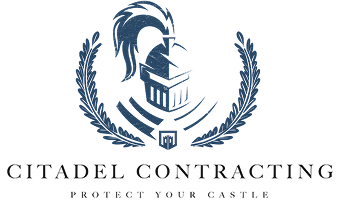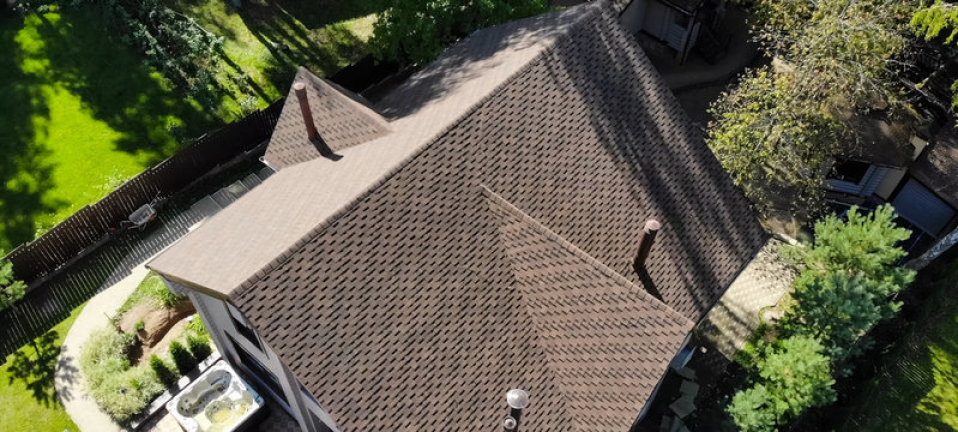Raleigh is a city with deep historical roots. Its neighborhoods, churches, and landmarks tell the story of generations past. From the grand Victorian homes in Oakwood to the historic buildings that line Fayetteville Street, these structures are a part of our city’s identity. But time, weather, and neglect can threaten their integrity—especially their roofs.
At Citadel Contracting, we understand the importance of preserving Raleigh’s history. A well-maintained roof not only protects a historic building from the elements but also ensures that its beauty and character remain intact for future generations. Whether you own a historic home or manage a landmark property, learning key historical roof preservation tips can help you safeguard its legacy.
Preserving Historical Roofs Protects Raleigh’s Architectural Character
A historic roof isn’t just a covering—it’s a defining feature of a building. The materials, craftsmanship, and unique designs reflect the time period in which the structure was built.
- Many Raleigh homes from the 1800s and early 1900s feature slate, cedar, or clay tile roofs.
- Intricate details, such as copper accents and decorative gables, add to a building’s historical authenticity.
- Modern roofing materials can take away from the character of a historic structure if not chosen carefully.
Preserving these original elements is essential to keeping Raleigh’s rich architectural heritage alive.
Regular Roof Maintenance Prevents Costly Repairs
Time and weather are a historic roof’s biggest enemies. North Carolina’s hot summers, heavy rain, and occasional hurricanes can lead to roof deterioration if proper maintenance isn’t in place.
- Missing or broken shingles allow water to seep into the structure.
- Cracked flashing around chimneys and vents leads to leaks.
- Wood rot weakens roof supports, creating safety hazards.
By scheduling routine inspections with Historical Roof Restoration experts like Citadel Contracting, homeowners can catch small issues before they turn into major (and expensive) problems.
Choosing the Right Materials Is Key to Authentic Restoration
When restoring a historic roof, using the right materials is crucial. Many older homes in Raleigh were built with materials that aren’t widely used today, making it essential to find the closest match possible.
- Slate roofing, common in historic homes, is durable but requires specialized installation and maintenance.
- Cedar shingles, used in early American architecture, offer charm but need proper treatment to prevent decay.
- Metal roofing, such as standing-seam copper or tin, was popular in historic commercial buildings and should be restored carefully.
At Citadel Contracting, we specialize in sourcing historically accurate materials to ensure your restoration remains true to its original design.
Historic Roof Restoration Enhances Energy Efficiency
While historical preservation is important, homeowners and property managers also want their buildings to be functional and energy-efficient. Fortunately, restoration techniques allow for improvements without compromising authenticity.
- Adding a breathable underlayment can improve insulation while maintaining the look of the original roof.
- Upgrading flashing and drainage systems helps prevent leaks and water damage.
- Proper attic ventilation reduces moisture buildup, preventing wood rot and mold growth.
With careful planning, a historic roof can maintain its original charm while meeting modern energy efficiency needs.
Restoring a Historic Roof Increases Property Value
A well-preserved historic property stands out in Raleigh’s real estate market. Buyers looking for homes in historic neighborhoods like Oakwood or Mordecai place great value on authenticity and well-maintained architectural details.
- Homes with historically accurate roofs retain higher resale value.
- A restored roof increases curb appeal and structural longevity.
- Preservation efforts contribute to the overall value of historic neighborhoods.
Investing in Historical Roof Restoration is not only about protecting history—it’s also a smart financial decision.
Raleigh’s Weather Makes Roof Preservation a Necessity
Historic roofs in North Carolina face unique challenges due to the state’s climate. The combination of humid summers, heavy rainfall, and the occasional hurricane makes regular maintenance a must.
- High humidity accelerates mold and mildew growth on older roofing materials.
- Storms can dislodge shingles or damage aging structures.
- Freezing temperatures in winter cause expansion and contraction, leading to cracks.
Without proper care, these factors can take a toll on even the most well-built historic roofs. That’s why Citadel Contracting recommends periodic inspections and timely repairs to keep your roof in the best possible condition.
Preserving Historic Roofs Benefits the Entire Community
Restoring a historic roof isn’t just about maintaining a single home—it’s about preserving the charm and identity of Raleigh as a whole. Well-maintained historic properties attract visitors, contribute to local tourism, and enhance community pride.
- Preservation efforts help maintain the unique character of Raleigh’s historic districts.
- Restored landmarks boost neighborhood aesthetics and cultural value.
- Protecting historic buildings strengthens the connection between past and present generations.
By choosing Historical Roof Restoration, homeowners and property managers play an essential role in preserving Raleigh’s heritage.
Conclusion
Raleigh’s historic buildings are a reflection of the city’s past, and preserving them requires careful attention to detail—especially when it comes to roofing. Proper historical roof preservation protects architectural integrity, prevents damage, and enhances property value. Whether your home has a slate, cedar, or metal roof, keeping it in top shape ensures that Raleigh’s history remains intact for years to come. If you need expert restoration services, trust Historical Roof Restoration from Citadel Contracting to bring your historic roof back to life.
Frequently Asked Questions
Why is historical roof preservation important?
Preserving a historic roof maintains a building’s authenticity, prevents structural damage, and helps protect Raleigh’s architectural history.
What are the most common materials used in historic roofs?
Slate, cedar shingles, clay tiles, and metal roofing were commonly used in historic homes and buildings in Raleigh.
How often should a historic roof be inspected?
A historic roof should be inspected at least once a year and after major storms to catch potential issues early.
Can a historic roof be made more energy-efficient?
Yes. Modern techniques like breathable underlayment, upgraded flashing, and improved ventilation can enhance energy efficiency while preserving the original design.
Does restoring a historic roof increase property value?
Absolutely. A well-preserved historic roof improves curb appeal, attracts buyers, and increases the overall value of a home.
Where can I find experts in historical roof restoration in Raleigh?
Historical Roof Restoration services from Citadel Contracting provide expert craftsmanship and historically accurate restorations for Raleigh’s heritage homes.










